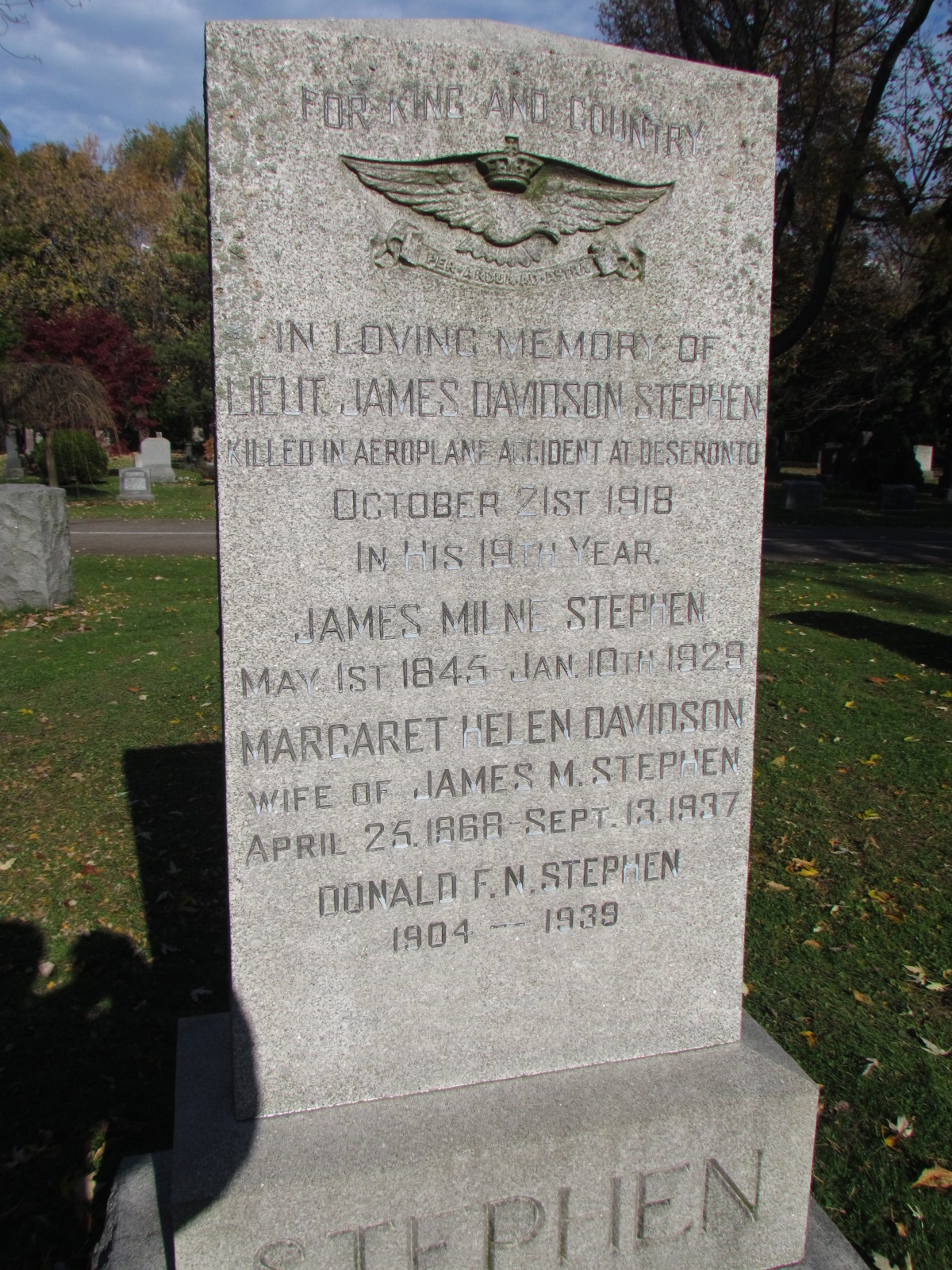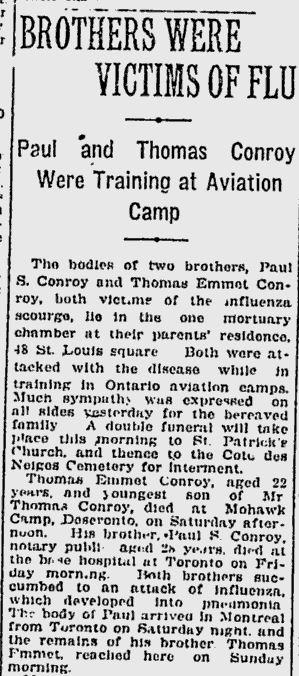 On this day in 1918 2nd Lieutenant James Davidson Stephen was killed in a air crash at Camp Rathbun. Stephen had joined the Royal Flying Corps on October 21st, 1917 in Toronto with the regimental number 153410 and was officially appointed on December 10th, 17 days before his eighteenth birthday. He was five feet seven and a half inches tall. Stephen trained as a pilot and in June 1918 he was appointed as a flying instructor with the Deseronto Wing of what was by then the Royal Air Force.
On this day in 1918 2nd Lieutenant James Davidson Stephen was killed in a air crash at Camp Rathbun. Stephen had joined the Royal Flying Corps on October 21st, 1917 in Toronto with the regimental number 153410 and was officially appointed on December 10th, 17 days before his eighteenth birthday. He was five feet seven and a half inches tall. Stephen trained as a pilot and in June 1918 he was appointed as a flying instructor with the Deseronto Wing of what was by then the Royal Air Force.
The Toronto World newspaper reported the crash in the following way:

LIEUT. J. D. STEPHEN KILLED IN A CRASH
Young Toronto Aviator Was Instructor at Camp Rathbun in Deseronto
Deseronto, Oct. 21. – Lieut.. J. D. Stephen, 636 Euclid avenue, Toronto, was killed and Cadet W. L. Somerville, of Burritt’s Springs, Ont., seriously injured, when their airplane crashed to the ground about a mile from Rathbun airdrome, at 11.30 a.m. today. The cause of the accident is being investigated.
Second Flight-Lieut. James Davidson Stephen was the son of ex-Staff Inspector James M. Stephen, 636 Euclid avenue, who retired from the Toronto police force about nine years ago. No particulars in regard to the accident have been received except that Cadet W. L. Somerville of Burritt’s Springs, Ont., was in the airplane at the time and sustained serious injuries.
Lieut. Stephen was born in Toronto 18 years ago and would have been 19 years of age on Dec. 27. He attended the Toronto public schools and Harbord Collegiate. His enlistment in the Royal Air Force took place in Dec., 1917. He trained at Burwash, Camp Borden, Leaside, Texas, Camp Mohawk, and Beamsville, where he received his commission.
He wanted then to go on overseas duty but the air force authorities encouraged him to become an instructor and out of regard for his mother he decided to do instructor’s work temporarily. He was assigned to a special course at Armour Heights and put on duty at Camp Rathbun training cadets. He was attached to the 90th Squadron. He had recently applied to his commanding officer for permission to proceed overseas and was promised that his wish would soon be granted.
The Royal Air Force casualty card for Stephen’s crash noted the following facts:
…Date of Casualty: 21.10.18
Where occurred: Deseronto Ontario
Type of Machine: Curtiss JN4 C.1024
Nature and Cause of Accident: [blank]
Result of Accident: Killed
Name of other Occupant of Machine: Cadet W. L. Somerville
The image below shows the aircraft after the crash. The cadet involved, William Lawrence Somerville recovered from his injuries (broken bones in his left leg) and was discharged from the RAF in February 1920.

In the Royal Air Force’s Court of Inquiry, Cadet Somerville gave the following account of the accident:

Detail of Attorney General’s 1918 file RG 4-32/2289 at the Archives of Ontario
8th Witness:- Can.154662 Pte.II.Somerville, W.L., Cadet for Pilot No. 90 C.T.S., R.A.F., being duly sworn, states:-
On the 21st day of October, 1918, at about 11.30 I went up with 2/Lt. Stephen to practise Camera Gun and Higher Manoeuvres. We were at 3000 feet, and Lt. Stephen put the machine into a right hand spin and we spun 1000 feet. I then did 2 left hand spins, which brought us down to 1000 feet. The machine came out of those spins quite easily. Lt. Stephen then made 2 left hand rolls, and in the second roll he seemed to have slight difficulty in getting it out. On the third roll I could feel him kicking on the rudder-bar, a thing he never did with me before. The machine went into a fast spin and continued so into the ground, I could feel Lt. Stephen working on the controls trying to get the machine out of spin, but I left controls absolutely alone. To the best of my knowledge the engine was full on all the time until we crashed.
Certified true statement. Cadet sent to Kingston Hospital. [signed] W.S. Anderson Capt. R.A.F.
Stephen was the son of James Milne Stephen and Margaret Helen (née Davidson). They buried their son in Mount Pleasant Cemetery, Toronto and put up a private memorial to him.

Memorial for James Davidson Stephen from FindaGrave.com, courtesy of Islington





















